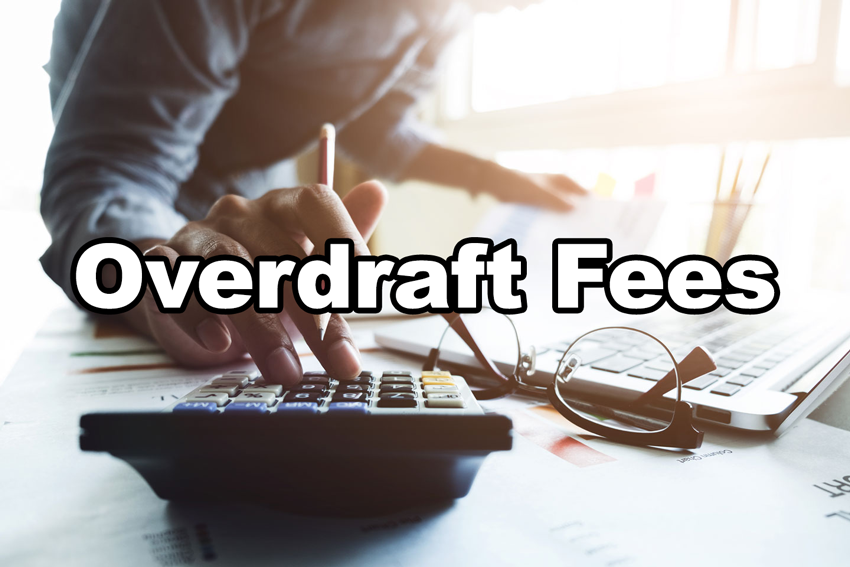In the headlines!
While perhaps overshadowed by more pressing current events, overdraft fees have had their fair share of press lately. They are a hot topic on the minds of regulators, consumers, and financial institutions. So, what is happening to bring this age-old topic of controversy into the spotlight once again?
Let’s start with the current administration and the CFPB. As I’m writing this, the House Financial Services Committee is holding a hearing to gather information, opinions, and examine the future of overdraft fees in the financial system. The American Bankers Association (ABA) presented to the Committee this week urging them to respect and protect the consumers’ ability to have a choice when it comes to overdraft options. Their studies show that the majority of consumers find the personal overdraft protection programs at their financial institutions valuable, and most were happy to have an overdraft item covered when they needed it. On the other hand, recent CFPB studies have documented that consumers largely feel that overdraft fees are unreasonable, excessive, and nearly impossible to recover from for a person who lives paycheck to paycheck. So, the future of overdrafts is yet to be determined, but surely the guidelines and regulations on this topic will continue to be under the spotlight.
A specific type of overdraft fee has been the subject of increased scrutiny in recent months. We have seen consumer litigation and examiner comments regarding fees for represented overdraft items. Consumers have claimed that it was not clearly and conspicuously disclosed to them that they could be charged an overdraft fee for an item each time it was represented by a merchant for payment, and it is declined due to the consumer having insufficient funds to cover the item. Examiners have stated that not disclosing this fact is potentially a UDAP concern. It is definitely time to pull out your new account opening disclosures and read the fine print. Do your disclosures clearly state that the consumer may be charged an overdraft fee each time the item is presented? In our recent testing of this language, we found that many institutions do not have this clearly stated. Some were surprised to hear this as they assumed the language provided from their vendors would be sufficient. We also recommend that this language is added to your fee disclosure and any overdraft program brochure or documentation, in addition to the new account disclosures. Institutions that have been found to not have this fee properly disclosed have been asked to complete a look-back anywhere from two (2) to ten (10) years and provide reimbursements as necessary. As you can imagine, the logistics of this are complicated and most likely very manual. The ABA has urged institutions that are the subject of this request to communicate to the regulator the logistical challenges of completing this task.
During recent exams, we have also seen that examiners have inquired about the notification process for overdrafts. Do the consumers have enough time to cure their negative balance before the same item is presented and they get a second overdraft fee. We recommend that you have documented all the options consumers have to access to their account status, i.e.: mobile banking alerts, online banking and alerts, email alerts, the timing of overdraft notices being mailed, etc.
Recent consumer litigation has also brought up a concern about whether the consumers are aware of how the balance is calculated in their accounts each day to determine overdraft fees. More specifically, do your disclosures state that the Institution will use the “available balance” method or the “ledger balance” method to determine overdrafts? Again, the claim here is that not properly and clearly disclosing this is a UDAP violation and/or Reg E violation.
So how to you protect your overdraft program and practices from causing UDAP concerns and potential violations? Well examiners have been clear that guidance is coming soon! In the meantime, here are our recommendations:
- Review your new account disclosures, overdraft documentation, and fee schedule. If it’s not clearly stated in all of these documents that a consumer will be charged each time an item is presented for payment – get that updated ASAP! (Again, no official model language has been released on this) Be sure to include frequency of fees assessed for the same item or maximum number of fees assessed for the same item.
- Review your new account disclosures and overdraft documentation to see if it clearly states the balance method used to calculate overdraft fees.
- Review your new account disclosures and overdraft documentation to ensure that the language accurately reflects the daily practice in your Institution.
- For automated overdraft programs – ensure that any dynamic limits (limits based on system algorithms) are clearly defined and communicated to customers, especially if the way these limits are calculated have changed since account opening.
- Lastly, review your overdraft program and/or practices to ensure that common UDAP concerns cannot be applied:
- Do you have a cap on daily fees? Even if you don’t have an automated overdraft program or opt in/out procedures – consider capping the amount of fees a consumer can be charged in one (1) day.
- Do you monitor for consumers who are excessively using or abusing their accounts and racking up overdraft fees? What process do you have in place to pro-actively reach out to them and offer assistance?
- Does your institution have a De Minimus overdraft amount? Consider having a threshold where small overdrafts don’t lead to big fees.
The above is certainly not a thorough and comprehensive list of overdraft requirements, our intention is to bring to light recent areas of focus in regulatory exams, consumer legal action and scrutiny so that you may be self-aware of any gaps your institution needs to review and address. Once again, we have been promised further guidance from the regulators on this topic and we certainly will share that information when it’s released.
Stay tuned to the headlines on this one!





0 Comments